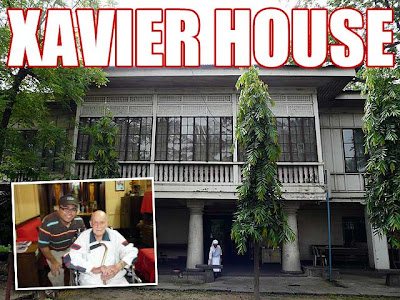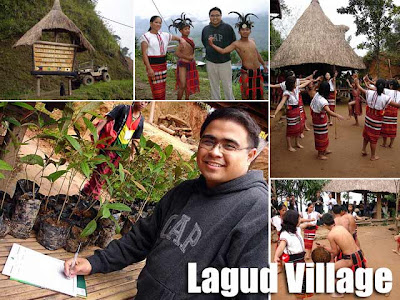
In 1983, UNESCO endorsed April 18 as the International Day for Monuments and Sites, on the proposal of the International Council on Monuments and Sites (ICOMOS). According to ICOMOS, "This special day offers an opportunity to raise public awareness concerning the diversity of the world’s heritage and the efforts that are required to protect and conserve it, as well as to draw attention to its vulnerability."
Every year, ICOMOS assigns a theme to the celebration. And this year's theme is: The Heritage of Agriculture.

The Philippines is no stranger to agricultural heritage. In fact, ICOMOS notes that the very first agricultural landscape inscribed in the UNESCO World Heritage List were the spectacular Rice Terraces of the Philippine Cordilleras in 1995. The inscription of the rice terraces, according to Henry Cleere, “established an important precedent by identifying the significance of landscapes that evolved in the production of significant staple and economic crops.”

With many agrarian communities around the country, almost every province in the Philippines has agricultural heritage. The cultural landscape of Batanes includes hedgerows which form quilt-like patterns across the farming hillsides of Batan Island. According to the Batanes Provincial Government, "They divide farm lots, protect crops from the wind, control erosion, host migrant birds and other species, and provide wood and reeds for domestic use."
Another example of agricultural heritage in Batanes is the Racuh a Payaman, which literally means wide pasture. This communal pasture collectively managed by the townsfolk, says the Batanes Provincial Government, depicts a people that values community ownership over private property. It adds that the beauty of Racuh is as awe-inspiring as the concept that it represents: that collective management is best where land space is limited.


Ilocos Norte has its tobacco heritage. The 19th century Tabacalera warehouse in Laoag has been adaptively-reused as the Museo Ilocos Norte.

Pampanga, Tarlac and Negros Occidental share the same sugar heritage. In San Fernando, Pampanga, the 1921 sugar central of the Pampanga Sugar Development Company (PASUDECO) still produces sugar. This structure is an inherent part of the industrial heritage of Pampanga.

In Victorias, Negros Occidental, many visit the Victorias Milling Company (VIMICO) to see its Chapel of the Angry Christ. Most if not all the grand mansions of Negros were built by sugar.
Many bahay na bato in rice producing areas had a camalig or rice granary beside it. In Angeles City, the camalig of the Nepomuceno House was adaptively-reused as a restaurant, the popular Historic Camalig Restaurant of Armando's Pizza.
In Laguna, the University of the Philippines established its College of Agriculture in 1909 on a 73-hectare abandoned farmland at the foot of the Mt. Makiling. By 1917, the campus had grown to 127 hectares with seven buildings, 500 students and an alumni association with 100 graduates. Many of those original structures still stand in UP Los Banos.

Straddling the boundary of Laguna and Quezon is Villa Escudero, a coconut plantation representative of the agricultural heritage of Southern Tagalog. A pioneering agro-industrialist, Don Arsenio Escudero constructed the country's first hydroelectric plant to supply his desiccated coconut factory and coconut plantation with electricity. (Photo by Augusto Villalon)
It is said that the grand mansions in the heritage towns of Sariaya, Quezon and San Juan, Batangas were built from the proceeds of the coconut trade.

ICOMOS also notes the intangible dimension of agricultural heritage, which Celia Martinez Yanez divides into rituals and festive events, on one hand, and skills, knowledge and traditional craftsmanship concerning nature and the universe, on the other.
The UNESCO Representative List of the Intangible Cultural Heritage of Humanity contains properties related to agricultural heritage such as the Hudhud Chants of the Ifugao (inscribed in 2008, originally proclaimed in 2001) which consists of narrative chants performed "during the rice sowing season, at harvest time and at funeral wakes and rituals."

There are many harvest-related festivals all over the country. On the feast day of San Isidro Labrador, the patron saint of farmers, are held the Pahiyas (Lucban), Agawan (Sariaya) and Mayohan (Tayabas) all in Quezon; and the Pulilan Carabao Festival in Bulacan. Every May 3, the UNESCO World Heritage City of Vigan, Ilocos Sur celebrates the Tres de Mayo Festival.
A physical reminder of knowledge of nature and the universe are the Stone Agricultural Calendars of Dap-ay Guiday in Besao (Bontoc, Mountain Province), which are National Cultural Treasures.
What is the agricultural heritage of your province? Share them by commenting below.
Ivan Anthony Henares is a member of the ICOMOS Philippines National Committee and expert member of the International Cultural Tourism Committee (ICTC).
































